Above and beyond
Dr Emma Liu travels to some of the world's most active volcanoes to understand what makes them erupt. Her latest work is helping a Pacific community to monitor the restless mountain they live with.
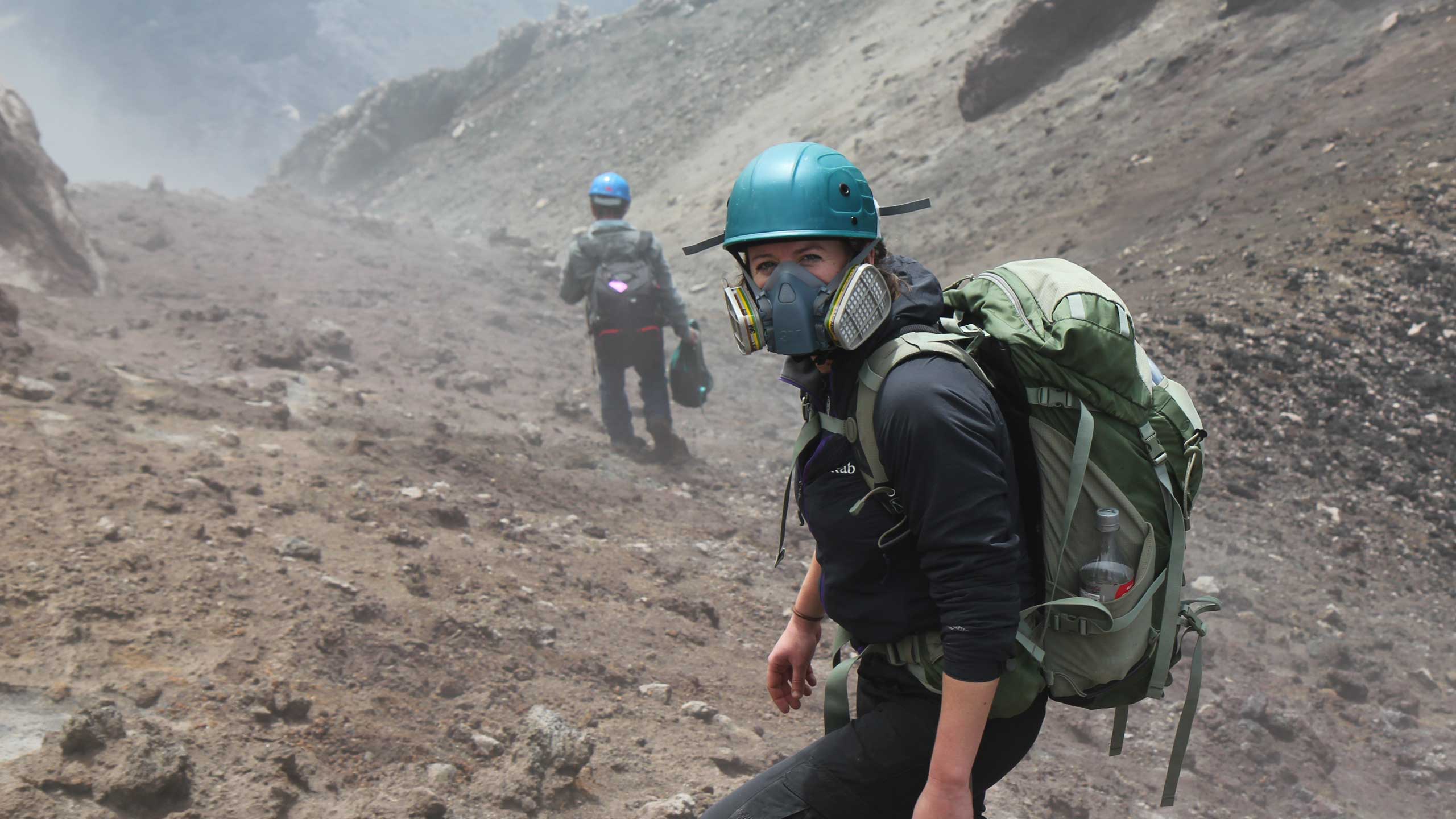
Standing on the rim of the volcano with her colleague and a local guide, Emma listened to the low roar of the crater's belly and watched as it spewed incendiary gobbets of lava.
A moment later, they launched their 'eye in the sky', a drone that can fly high above the volcano to collect gas chemistry data from directly inside the plume.
Aeroengineer Dr Kieran Wood, from Bristol University, launches a drone in Papua New Guinea as part of the ABOVE project
Aeroengineer Dr Kieran Wood, from Bristol University, launches a drone in Papua New Guinea as part of the ABOVE project
"Volcanoes are always going to erupt and so remote gas sensing – 'breathalysing' them, if you like – to assess hazard is an important defence to build resilience in communities that live nearby," explains Emma, from Cambridge University's Department of Earth Sciences.
Worldwide, around half a billion people live in areas at risk from volcanic eruptions. Even a volcano a thousand miles away can bring chaos and disruption to many, as Iceland's Eyjafjallajökull taught us in 2010. Yet we still have much to learn about what makes volcanoes erupt and whether we can predict when.
Drones offer an invaluable contribution to monitoring by making observations closer to volcanoes than ever before, irrespective of hazardous or inaccessible locations. In fact, some of the research team's flights are from a distance of 8 km away and to a height of 3 km.
"There are satellites that monitor volcanoes for gas release, but there's a lot of uncertainty and errors involved in that because you’re looking from so far away at something quite small," Emma explains. "Drones are providing a real intermediary between direct sampling and remote measurements in that we can get these close-to-vent measurements but from a safe distance."
As well as providing access to the inaccessible, drones are also changing how the researchers monitor changes in the behaviour of a volcano.
"We now design sophisticated aerial experiments to test specific hypotheses, like how the chemical reactions that are happening in the volcanic plume mature as they move down wind and what this means in terms of forecasting," she adds.
Their drone carries lightweight sensors to measure gases, particulates, temperature and humidity, as well as cameras to take visual and thermal images of eruptions in real time.
Previous work in Guatemala
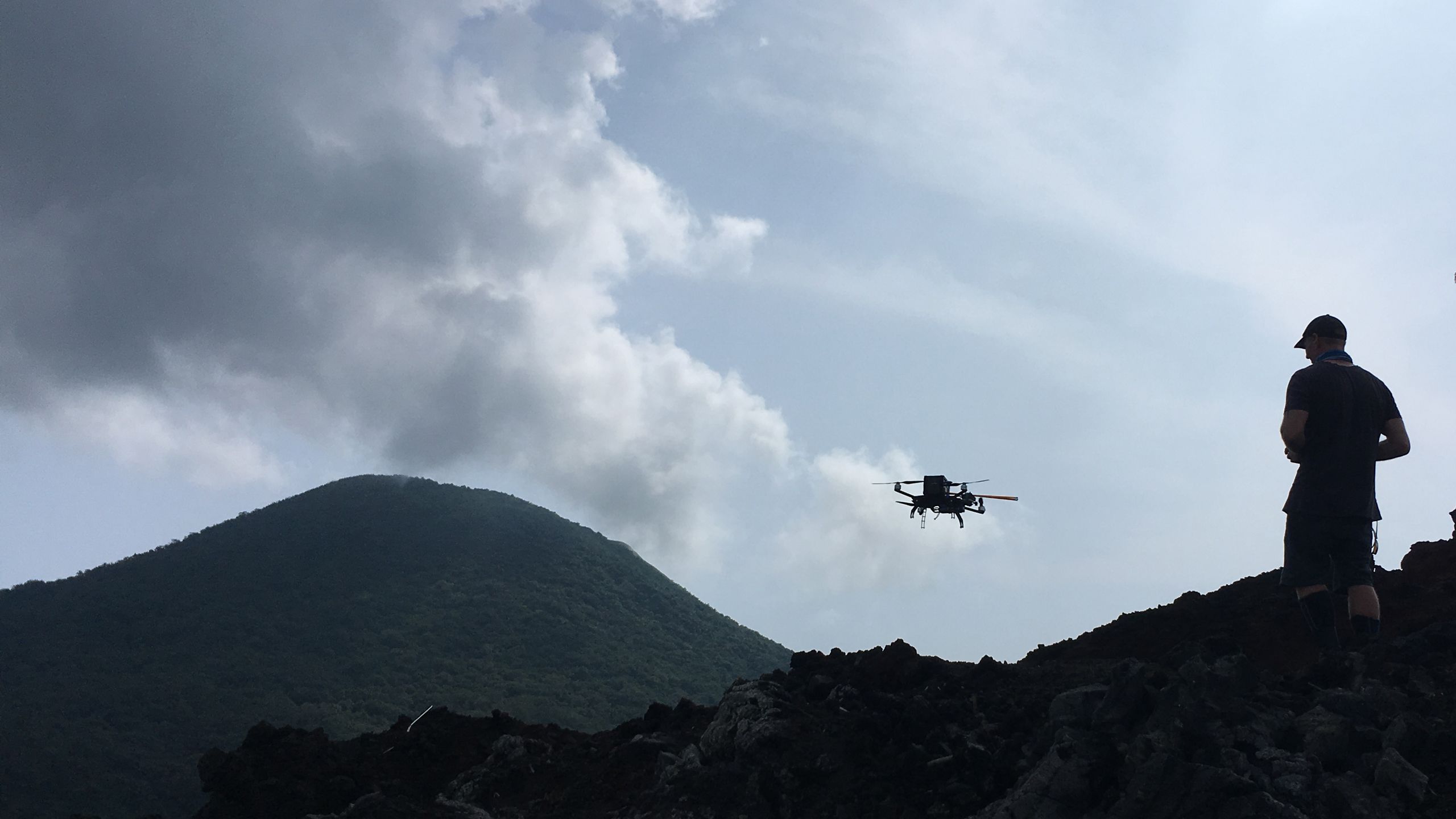
"Right from the beginning this project was all about jumping us into the next decade of deep carbon science."
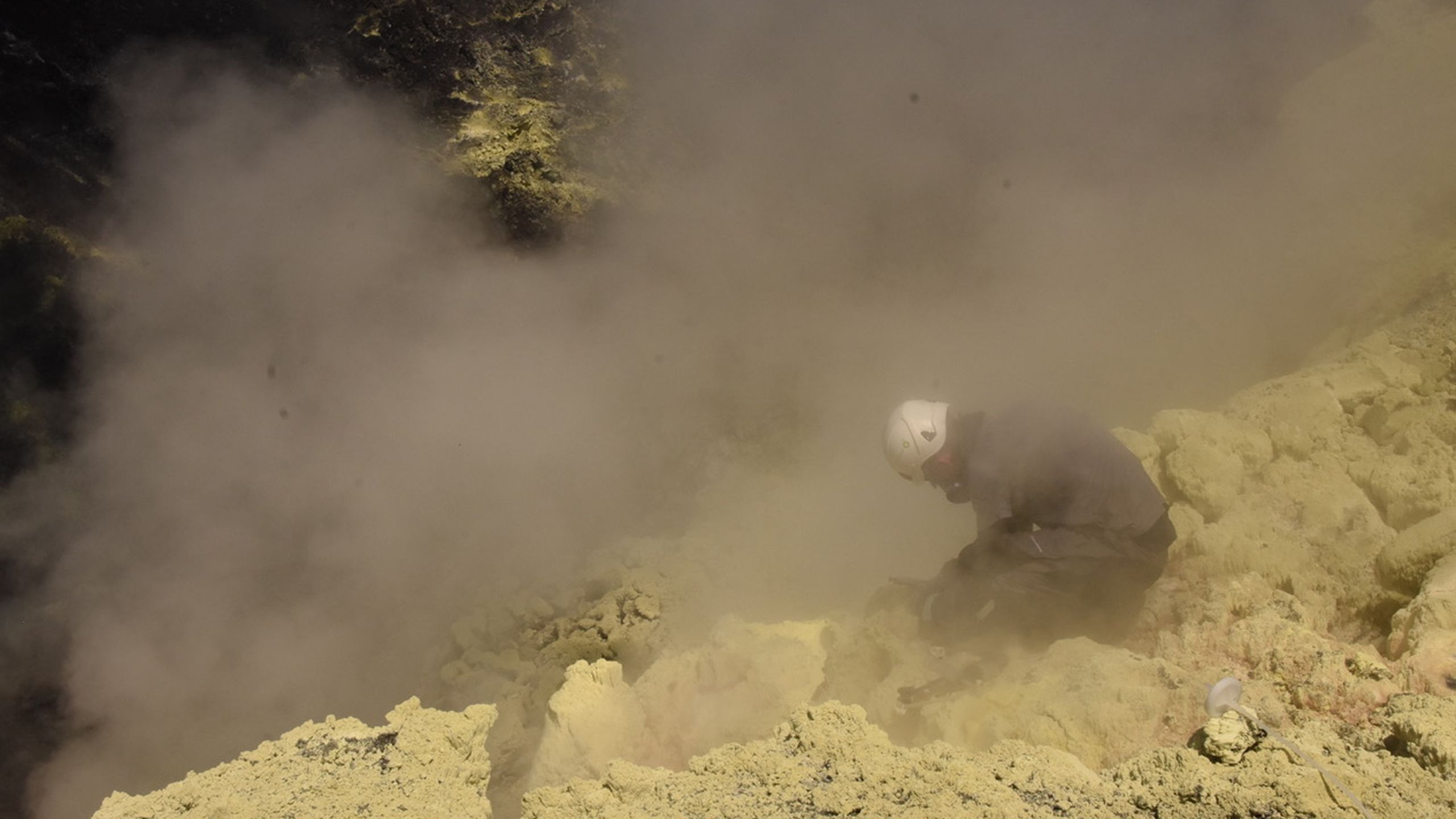
Emma's recent work has been in Manam, Papua New Guinea, where she leads the Aerial-Based Observations of Volcanic Emissions (ABOVE) programme, funded by the Alfred P. Sloan Foundation as part of the Deep Carbon Observatory . Five major explosions have occurred here in the past year. In 2004, the whole island was evacuated, and islanders only started to return five years ago.

"We chose Papua New Guinea for many reasons," she explains. "We looked at our global dataset of carbon emissions around the world and identified gaps. Papua New Guinea really stood out because it has some of the most strongly degassing volcanoes as measured from satellites in space and yet almost entirely lacks ground-based measurements.
"Also, permanent relocation is seen as unacceptable to the islanders because the island is essential to their way of life. Instead they want to help themselves to live alongside the volcanic hazard."
ABOVE is the first time a global collaborative effort of scientists, aerospace engineers and pilots has been assembled to fill in some of the gaps in our understanding of what makes volcanoes erupt.
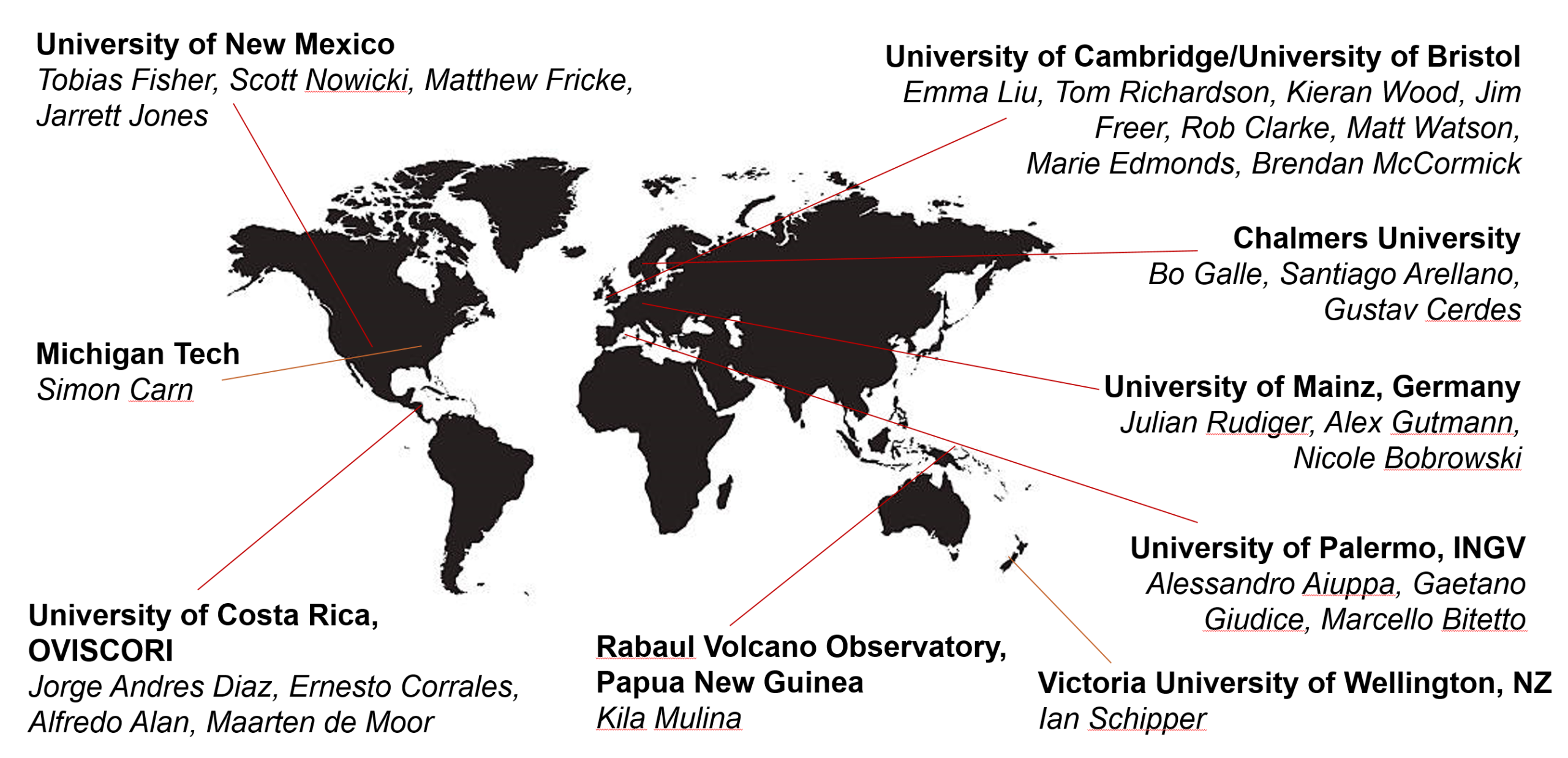
In May 2019, the team of researchers undertook an ambitious field deployment to Manam, and also Tavurvur (Rabaul), in Papua New Guinea. They brought with them fixed-wing and rotary drones fitted with tiny sensors and cameras to collect data from the volcanoes. Each group had a slightly different focus on what, where and how they sampled the volcanic flux.
One drone, for instance, measured carbon dioxide levels as it flew through the plume, feeding the information in real time back to the drone operator. When the gas level was high enough, the operator would trigger a pump to take a sample for analysis back on ground level, where the ratios of carbon dioxide and sulphur dioxide could be used to forecast volcanic unrest.
"Right from the beginning this project was all about jumping us into the next decade of deep carbon science," explains Emma.
"We collected data for the first time at a volcano where it’s never been monitored before, we achieved engineering feats that a year ago we wouldn’t have even entertained as an idea, and we can now start to fill in some of the gaps in our understanding of the signature ‘breath’ of a volcano and the critical role of volcanoes in the deep Earth carbon cycle."
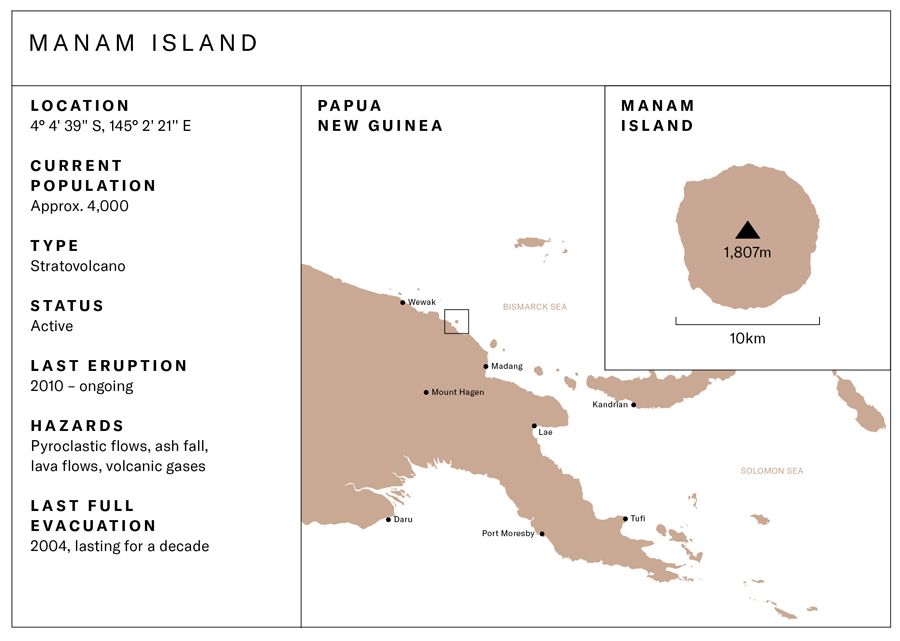
Working with members of the Manam Volcanic Disaster Response Committee, Emma saw an opportunity to help a community-led resilience programme.
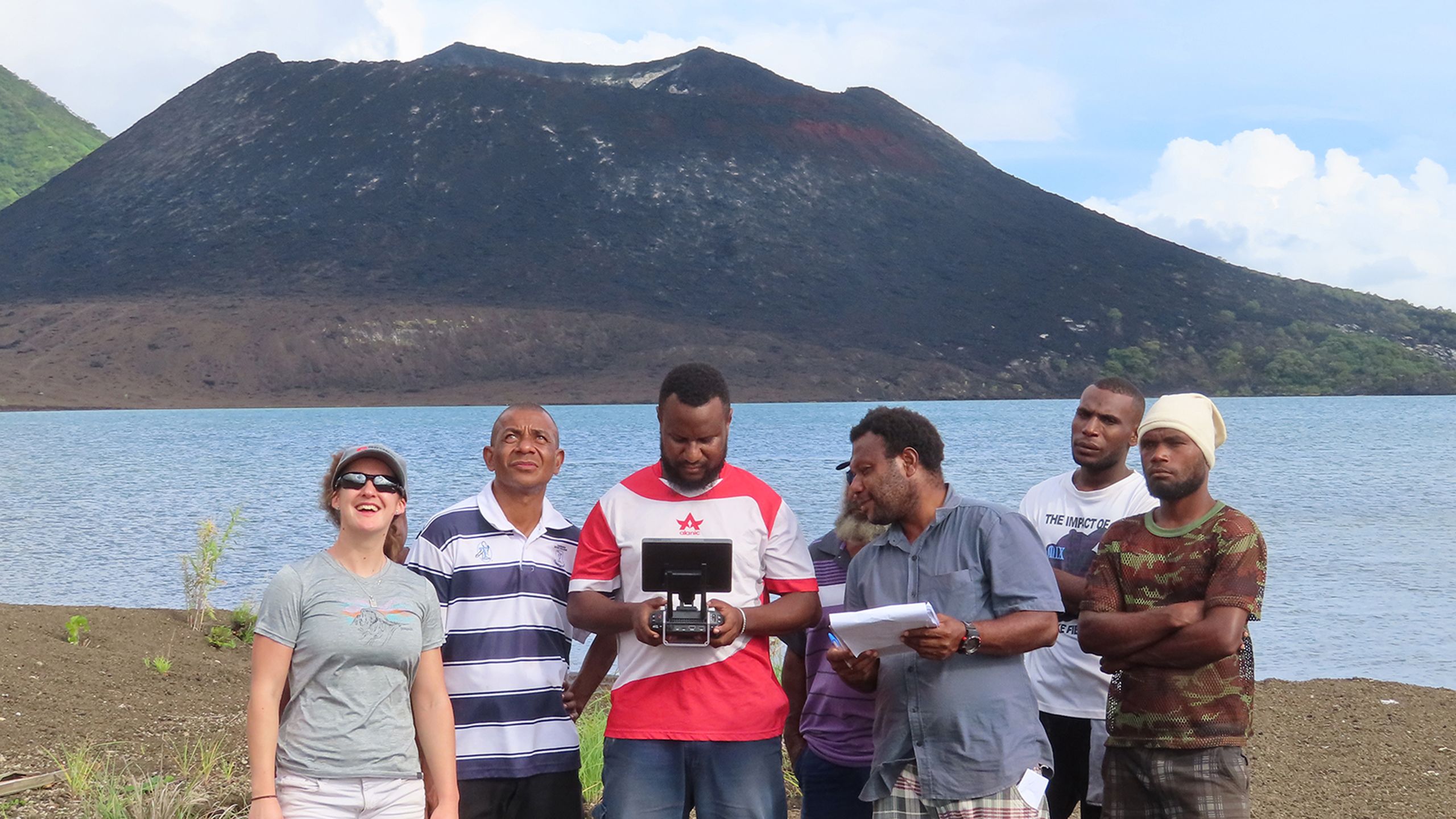
"Meeting the islanders was quite sobering – it helped us to understand the deeper social context of what an evacuation really means for the people involved," says Emma.
"The generosity of the local tribe was unimaginable – we would leave equipment outside as permanent monitoring stations and within a few minutes the local people had constructed shelters above of wood, bamboo and woven leaves. None of this project would have been possible without them."
One of the biggest successes, she adds, is the collaboration the team set up with the local volcano observatory to continue the measurements.
She and colleagues trained local scientists how to use the drones, funded through a Global Impact Acceleration Grant from the Engineering and Physical Sciences Research Council Global Challenges Research Fund.
"The islanders have been relying on visual monitoring up till now," she says. "They can now fly them over the volcano to do the same gas monitoring as we were. And when there is an eruption, it will be useful to get something in the air to see what and who is most at risk."
One representative from each of the provinces in Papua New Guinea came to their training workshop and as a result has since successfully lobbied provincial governments for additional funding to help them build the resilience programme.
Meanwhile, Liu will continue to collect data from the volcanoes themselves. "Field-based studies are crucial – these aren’t processes we can recreate in the lab – and there’s a buzz about being there.
"When I’m at the crater rim, with a line of volcanoes stretching before me... at times like this, I feel a little bit superhuman."
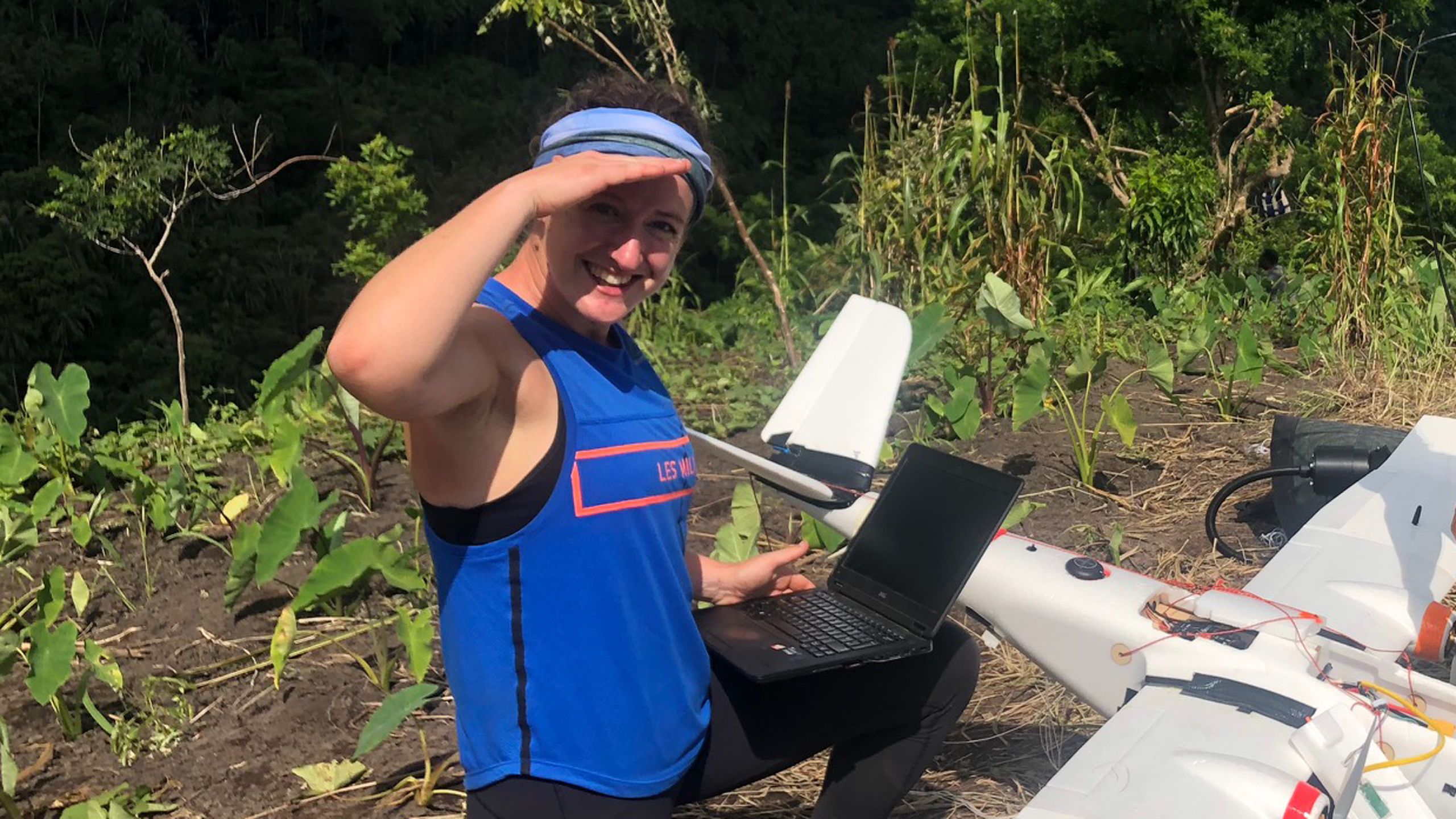
Dr Emma Liu is a Leverhulme Research Fellow in the Cambridge Department of Earth Sciences as well as a Fellow of Lucy Cavendish College.
Photo credits: Emma Liu and Kieran Wood
Manam map credit: Modern Designers


